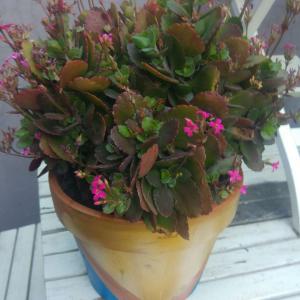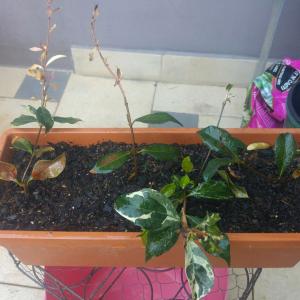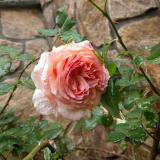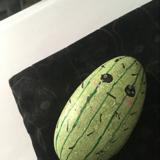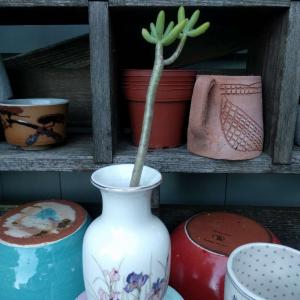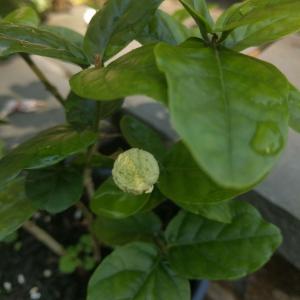成长记
lynns590
2017年09月30日

I new added a "Moon cactus and Crassula perforta variegata" in my "garden"


0
0
成长记
brielle
2017年09月30日

I new added a "Dracaena Deremensis - Janet Craig Compacta" in my "garden"
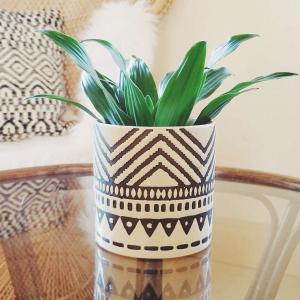

1
0
成长记
cclecombe
2017年09月30日

I new added a "Variegated Rubber Plant" in my "garden"


2
1
meriunkat:@cclecombe awesome and then you get the chance to watch it grow as well 😆
cclecombe:@meriunkat I know right! I was planning on getting a larger one from Amazon, but the flower stall on my local market were selling baby ones for £2.50 so I couldn't resist! It turns out it's better to get them small as they learn to acclimate to being a house plant much better than if you were to bring home a full grown one, so it's a win-win!
meriunkat:How cute!😄💚
文章
Dummer. ゛☀
2017年09月30日

Jade Plant (Crassula ovata) is a succulent native to South Africa, now a familiar garden and houseplant around the world, largely due to how easy it is to care for. It is tolerant of poor sandy soil, prefers to be root bound in a pot and doesn’t need too much watering. With minimal care, these plants can live for decades. Only in regions where the temperatures are extreme, do you even have to worry about the temperature in which to keep your Jade Plant. Jade Plants actually need some exposure to cooler temperatures in the winter to thrive.
Hardy Zones
Jade Plant is considered hardy in U.S. Department of Agriculture plant hardiness zones 10 and 11, with temperature ranges of 30 to 50 degrees Fahrenheit (-1 to 10 degrees Celsius) in the winter. Throughout much of the West Coast and southern states, the Jade Plant can live outdoors even in the winter.
Best Temperatures
Jade Plants will tolerate lower temperatures and even prefer the lower temperatures of about 45 to 55 degrees Fahrenheit (7 to 13 degrees Celsius) in the winter.
Cold Temperature Damage
If exposed to frost or low temperatures for too long, your Jade Plant may appear limp. If this occurs, you may just need to wait and see if the plant revives. Cut back any stems that turn black or appear rotted. Don’t be tempted to overwater the plant to revive it. Let the soil dry out before watering. Bring it indoors into a room that gets good ambient sunlight.
Protection from Cold Temperatures
If you live in an area where temperatures regularly drop below 45 degrees Fahrenheit (7 degrees Celsius), you should keep your Jade Plant in a pot and bring it indoors for the winter. You can move it back outdoors in the spring when temperatures are regularly above 45 degrees Fahrenheit (7 degrees Celsius). If you live in a region where temperatures only sometimes drop too low for your Jade Plant, then it will probably be fine outdoors with some protection from frost, such as bringing it onto a covered patio, covering it with cloth, or stringing Christmas lights onto the plant.

Hardy Zones
Jade Plant is considered hardy in U.S. Department of Agriculture plant hardiness zones 10 and 11, with temperature ranges of 30 to 50 degrees Fahrenheit (-1 to 10 degrees Celsius) in the winter. Throughout much of the West Coast and southern states, the Jade Plant can live outdoors even in the winter.

Best Temperatures
Jade Plants will tolerate lower temperatures and even prefer the lower temperatures of about 45 to 55 degrees Fahrenheit (7 to 13 degrees Celsius) in the winter.

Cold Temperature Damage
If exposed to frost or low temperatures for too long, your Jade Plant may appear limp. If this occurs, you may just need to wait and see if the plant revives. Cut back any stems that turn black or appear rotted. Don’t be tempted to overwater the plant to revive it. Let the soil dry out before watering. Bring it indoors into a room that gets good ambient sunlight.

Protection from Cold Temperatures
If you live in an area where temperatures regularly drop below 45 degrees Fahrenheit (7 degrees Celsius), you should keep your Jade Plant in a pot and bring it indoors for the winter. You can move it back outdoors in the spring when temperatures are regularly above 45 degrees Fahrenheit (7 degrees Celsius). If you live in a region where temperatures only sometimes drop too low for your Jade Plant, then it will probably be fine outdoors with some protection from frost, such as bringing it onto a covered patio, covering it with cloth, or stringing Christmas lights onto the plant.
0
0
文章
Dummer. ゛☀
2017年09月30日

Revered for its beauty, the stunning Dahlia flower comes in diverse shapes, sizes and colors. The Dahlia blooms for extended periods of time, surpassing most other garden flowers, and many gardening enthusiasts refer to it as the “Queen of the Autumn Garden”. The Dahlia‘s allure has a far reach: it is San Francisco’s official flower, an official emblem of Mexico, and is considered in Japan to be a sign of good taste.
History
Indigenous to the highlands of Mexico and Guatemala, the Dahlia flower first arrived in Europe in the 1500s, following the defeat of the Aztec Indians by Spanish conquistadors. Dahlias were introduced to Spain by returning botanists, who had accompanied the Spaniards to the New World. In 1789, Vincente Cervantes, director of Mexico City’s Botanical Gardens, sent Dahlia seeds to Spanish botanist Antonio Cavanilles of Madrid. Eventually, Cavanilles sent Dahlia bulbs to Swedish botanist Andreas Dahl, for whom the Dahlia is named. Dahl helped popularize the flower throughout Western Europe and Scandinavia.
Ancient Uses
Before the Spanish arrived in Mexico, the Aztecs named the Dahlia “Acocotli,” which means “water cane.” This specifically referred to the Dahlia imperialis, which today is called tree Dahlia. Growing to a height of 20 feet or more, this variety of Dahlia has hollow stems, which Aztec hunters used to transport water. Centuries ago, the Dahlia‘s large, fleshy roots, or tubers, held significant meaning for the Aztecs, who used the underground part of the plant to create a treatment for epilepsy.
Names
Dahlia, which means “valley,” is a reference to Andreas Dahl, though it unclear as to why the flower received his surname instead of being named after one of the first Spanish botanists to study it. Dahlia flowers belong to the Asteraceae family, a group that includes Sunflowers, Asters and Daisies. “Asteraceae” means “star,” referring to the star shape of the Dahlia blossom.
Love and Dahlias
Symbolizing hope for an everlasting union between two people, Dahlia flowers are presented to couples at engagement parties and weddings. These flowers, which bloom in white and a variety of showy hues, including pink, crimson, orange and yellow, are given as an anniversary gift in celebration of 14 years of marriage, although the origin of this tradition is unknown.
Considerations
In Victorian times it was inappropriate to exhibit intimate feelings in public, and the exchange of flowers expressed unspoken words of affection. Dahlias, like many of varieties of flower, were imbued with different meanings. Dahlia blossoms represent contradictory virtues. The flower’s negative connotations of betrayal, instability and dishonesty conflict greatly with Victorian-era ones of dignity, elegance and forever thine, which are still relevant meanings of today. Because of its disparate meanings, a written explanation included with the bouquet of Dahlia flowers might help to clarify a sender’s intentions to the recipient.

History
Indigenous to the highlands of Mexico and Guatemala, the Dahlia flower first arrived in Europe in the 1500s, following the defeat of the Aztec Indians by Spanish conquistadors. Dahlias were introduced to Spain by returning botanists, who had accompanied the Spaniards to the New World. In 1789, Vincente Cervantes, director of Mexico City’s Botanical Gardens, sent Dahlia seeds to Spanish botanist Antonio Cavanilles of Madrid. Eventually, Cavanilles sent Dahlia bulbs to Swedish botanist Andreas Dahl, for whom the Dahlia is named. Dahl helped popularize the flower throughout Western Europe and Scandinavia.

Ancient Uses
Before the Spanish arrived in Mexico, the Aztecs named the Dahlia “Acocotli,” which means “water cane.” This specifically referred to the Dahlia imperialis, which today is called tree Dahlia. Growing to a height of 20 feet or more, this variety of Dahlia has hollow stems, which Aztec hunters used to transport water. Centuries ago, the Dahlia‘s large, fleshy roots, or tubers, held significant meaning for the Aztecs, who used the underground part of the plant to create a treatment for epilepsy.

Names
Dahlia, which means “valley,” is a reference to Andreas Dahl, though it unclear as to why the flower received his surname instead of being named after one of the first Spanish botanists to study it. Dahlia flowers belong to the Asteraceae family, a group that includes Sunflowers, Asters and Daisies. “Asteraceae” means “star,” referring to the star shape of the Dahlia blossom.

Love and Dahlias
Symbolizing hope for an everlasting union between two people, Dahlia flowers are presented to couples at engagement parties and weddings. These flowers, which bloom in white and a variety of showy hues, including pink, crimson, orange and yellow, are given as an anniversary gift in celebration of 14 years of marriage, although the origin of this tradition is unknown.

Considerations
In Victorian times it was inappropriate to exhibit intimate feelings in public, and the exchange of flowers expressed unspoken words of affection. Dahlias, like many of varieties of flower, were imbued with different meanings. Dahlia blossoms represent contradictory virtues. The flower’s negative connotations of betrayal, instability and dishonesty conflict greatly with Victorian-era ones of dignity, elegance and forever thine, which are still relevant meanings of today. Because of its disparate meanings, a written explanation included with the bouquet of Dahlia flowers might help to clarify a sender’s intentions to the recipient.
0
0



